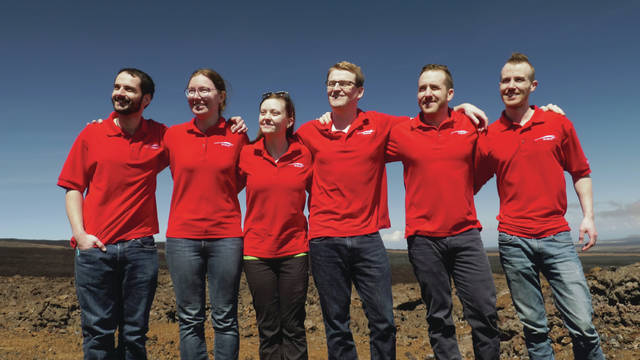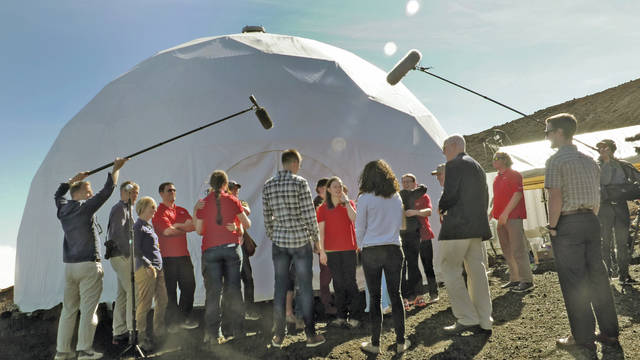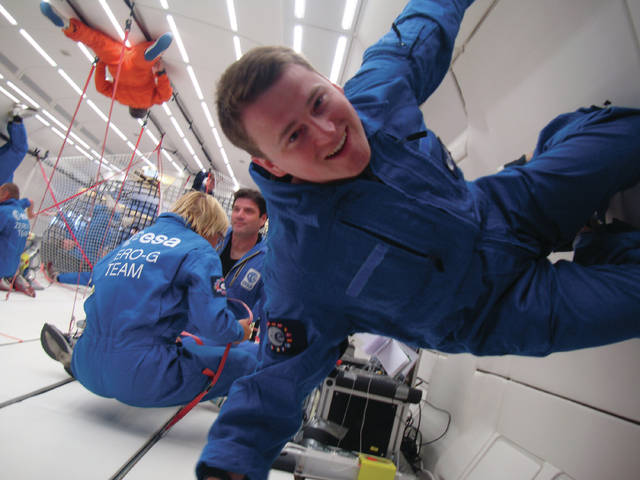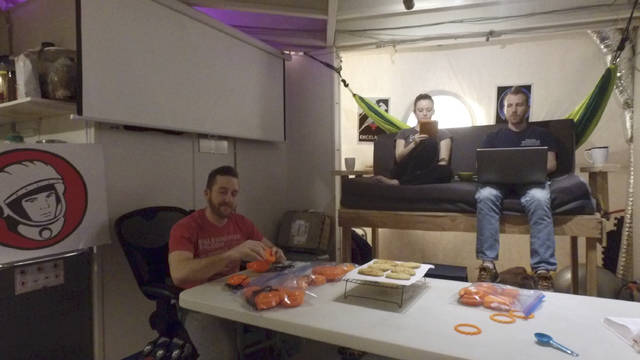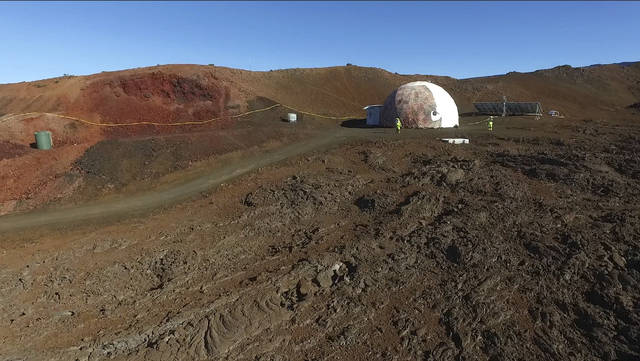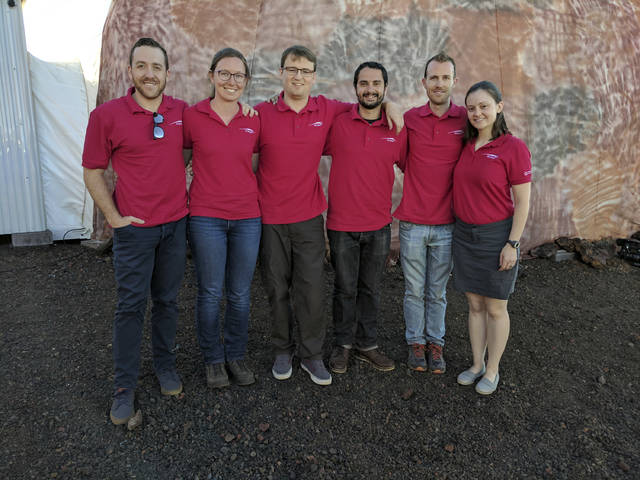MAUNA LOA — The strangest experience, perhaps, was seeing all the different human faces. ADVERTISING MAUNA LOA — The strangest experience, perhaps, was seeing all the different human faces. After emerging Sunday morning from a small, white dome high atop
MAUNA LOA — The strangest experience, perhaps, was seeing all the different human faces.
After emerging Sunday morning from a small, white dome high atop the lava rocks on Mauna Loa that looks every bit the part of otherworldly, the six latest participants in a Mars simulation study ended their isolation and ventured back into the real world.
And there to greet them were family, researchers, media and other everyday folks.
And that was, well, strange.
“It’s quite an odd experience,” said James Bevington, a freelance researcher who took part in HI-SEAS Habitat of Mauna Loa, about seeing the throngs of people ready to communicate in real time after the team emerged.
“Coming out,” echoed researcher Samuel Payler on what was the most stressful time during nearly a year away from the real world. “I think I was the most nervous then.”
But emerge and re-assimilate they did, after having mimicked life on another planet, where communication was 20 minutes delayed with anyone and a trip to the convenience store was never an option.
The goal of the mission — and successfully completed by what the program has gathered — was the physiological effects on people trying to inhabit Mars. The members lived together in isolation, researched their surroundings in space suits, and grew their own vegetables with the understanding that they were in it all on their own.
They completed 1,000 surveys each along the way, learned lessons about themselves, what makes team cohesion and, among other things, what they didn’t miss about Earth, actually.
But first, they shared the important lessons.
“Work to find a winning solution, and not settle for compromise. I think it’s really possible to find a better solution than just giving up something to get something back,” said Ansley Barnard, an engineer from Reno, Nevada, on what her most important takeaway was. “I think you’re going to end up with a much better choice, but we don’t often take the time to be that honest.”
The NASA-funded simulation, on the flank of Mauna Loa overlooking Saddle Road and Mauna Kea, is the fifth conducted by HI-SEAS. Others lasted from four months to a year, with focuses on group cohesion to more basic needs such as crafting palatable meals from limited ingredients.
Communication is key, the researchers agreed in the end.
It’s especially so when dialogue is hard to come by in the first place, talking through delays, radios, and through those enormous helmets perked atop space suits. In fact, when communication broke down, the solution often turned out to be simple. Stop the conversation, Bevington said, and identify the hiccup head-on by saying, wait, who understands what right now?
“We solved them,” Bevington said of those issues, adding cohesion among the team was near flawless. “It’s almost always a communication issue.”
And yes, there were perks of the everyday world they all missed.
Brian Ramos, a Portuguese-American researcher, missed home cooking — try as he did to recreate it. The simple ease of sitting down in a coffee shop was another longing. Colorado native and engineer Joshua Ehrlich missed walking out his door and hiking the wondrous Rocky Mountains.
But with that came the bliss from rewards that determined work can only provide. Ehrlich, tasked with growing vegetables, relayed how divine a taste the veggies were once sprouted.
“It brought the taste of Earth into our habitat,” he said, recounting how he was even floored by the bright red color of tomatoes — there’s not a lot of different hue atop the black, gray and dark orange lava rock, after all. “Just this fulfilling sensation of what home tastes like.”
And there were things Earth offers they didn’t miss. Spam emails, the onslaught of what can be trivial information on social media, some said they weren’t sorry to leave behind. Some worldly things they loved, though, and those helped fill down time — FIFA World Cup soccer video games, playing instruments like the ukulele and violin and the freehand drawing board game, Pictionary, were a few team favorites.
But the overall goal was achieved, they said. It was to provide information on how humans can one day inhabit different worlds. While simulations can shift slightly in focus, each is meant to study psychological challenges associated with extended isolation. A real mission to Mars would take about 2.5 years.
And after eight months of near solitude and some more data behind it, the big-picture research could well be one step closer to achieving that goal.
“That’s the point,” Bevington said. “That’s why we’re here.”


